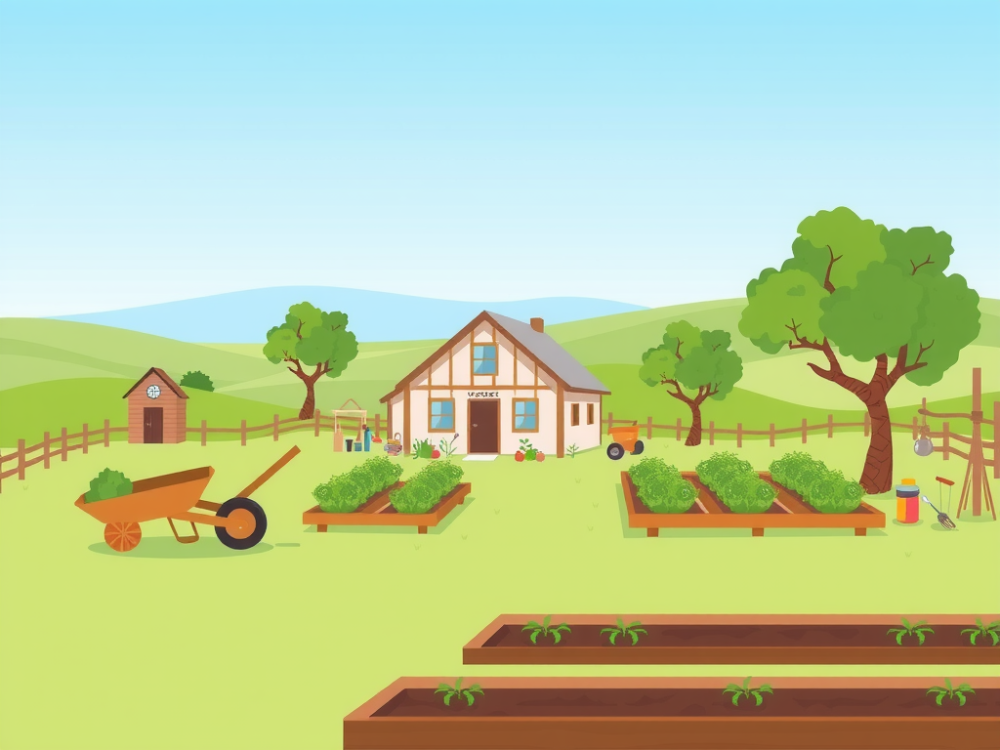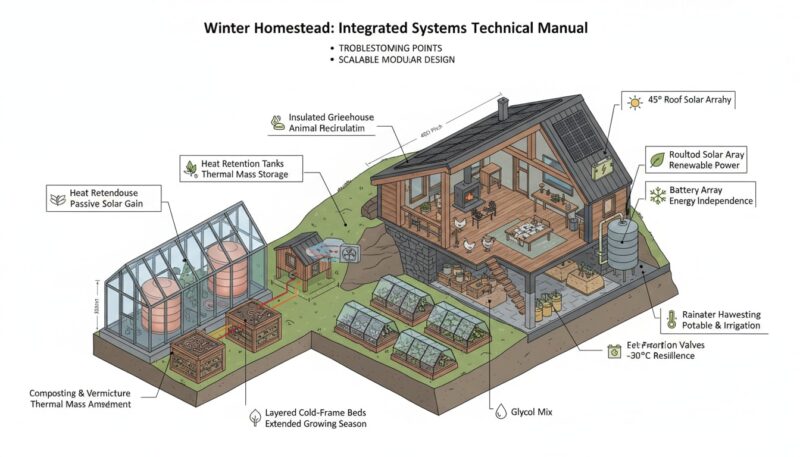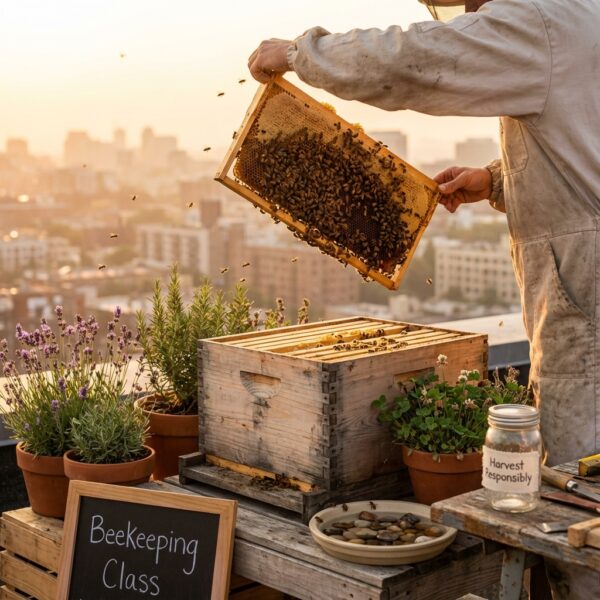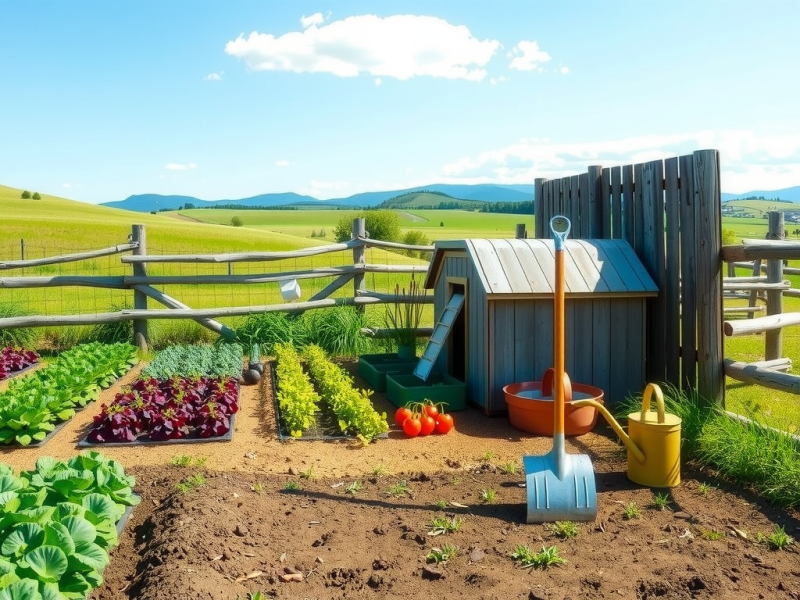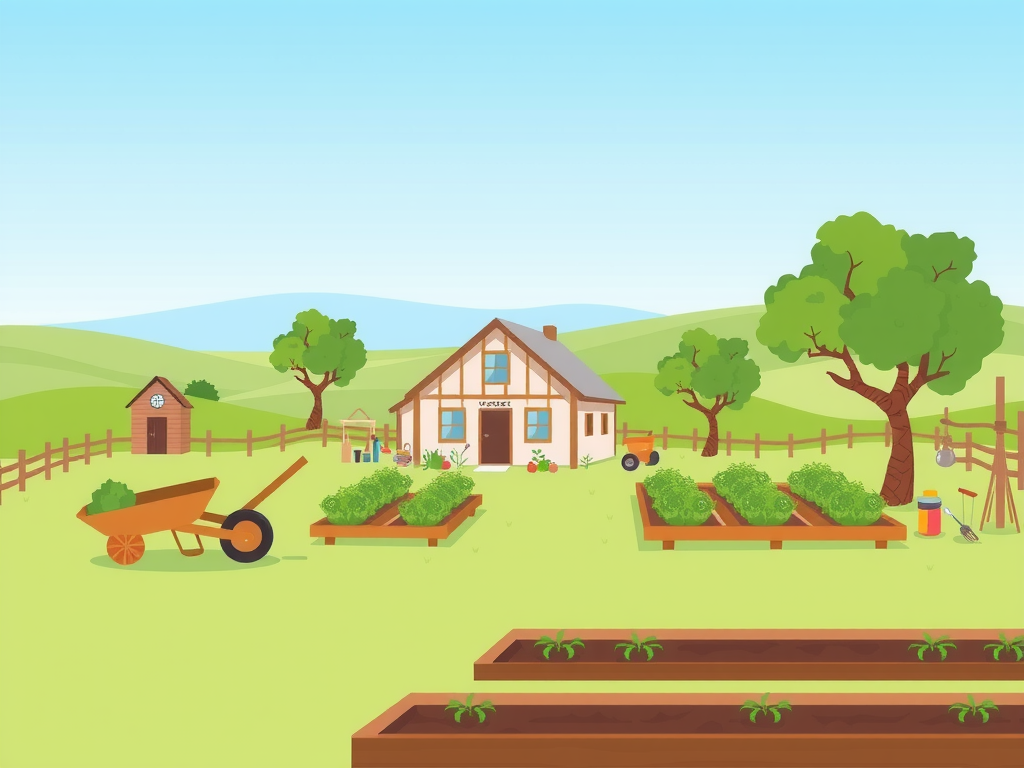
Diving into homesteading feels like setting off on a thrilling adventure! This journey into self-sufficiency isn’t just about growing food; it’s about building a fulfilling lifestyle enriched by sustainable living. To help you along the way, having a solid checklist can make all the difference.
It acts as your roadmap, guiding you through essential tasks that ensure a thriving homestead.
- Evaluate land requirements: Consider the size, soil quality, water availability, and zoning laws of the property.
- Plan the garden layout: Identify crops suitable for your climate, prepare the soil, and organize planting schedules.
- Set up livestock operations: Choose suitable animals, build shelters, and establish feeding routines.
- Create essential infrastructure: Build a greenhouse, chicken coop, barn, or other structures as required.
- Ensure water management: Set up irrigation systems, rainwater collection, and filtration units if needed.
- Focus on sustainability: Implement composting systems, renewable energy options, and crop rotation practices.
- Designate storage spaces: Establish areas for tools, equipment, and harvest storage.
- Plan finances: Budget for initial costs, ongoing supplies, and emergency expenses.
- Connect with the homesteading community: Learn from local groups or online communities for advice and resources.
- Prioritize safety measures: Install fencing, secure food supplies from wildlife, and prepare for natural disasters.
Assessing Your Land For Self-Sufficiency
Before diving into homesteading, assessing your land plays a pivotal role in achieving self-sufficiency. Evaluating soil health helps ensure healthy crops; check soil health through pH tests and nutrient analysis. Analyzing the topography is important; hills and slopes affect water drainage, which is necessary for both gardening and livestock. Reliable water sources also matter—setting up irrigation systems and rainwater collection can quench your crops’ and animals’ thirst. Identifying potential challenges like pests and extreme weather conditions will help you strategize effective pest management and create a resilient homestead environment.
- Conduct soil testing for quality assessment.
- Evaluate topography and drainage for optimal crop placement.
- Identify reliable water sources for irrigation and livestock.
- Survey for pest issues and create a plan for management.
- Consider climate adaptability in your planning to ensure crop success.
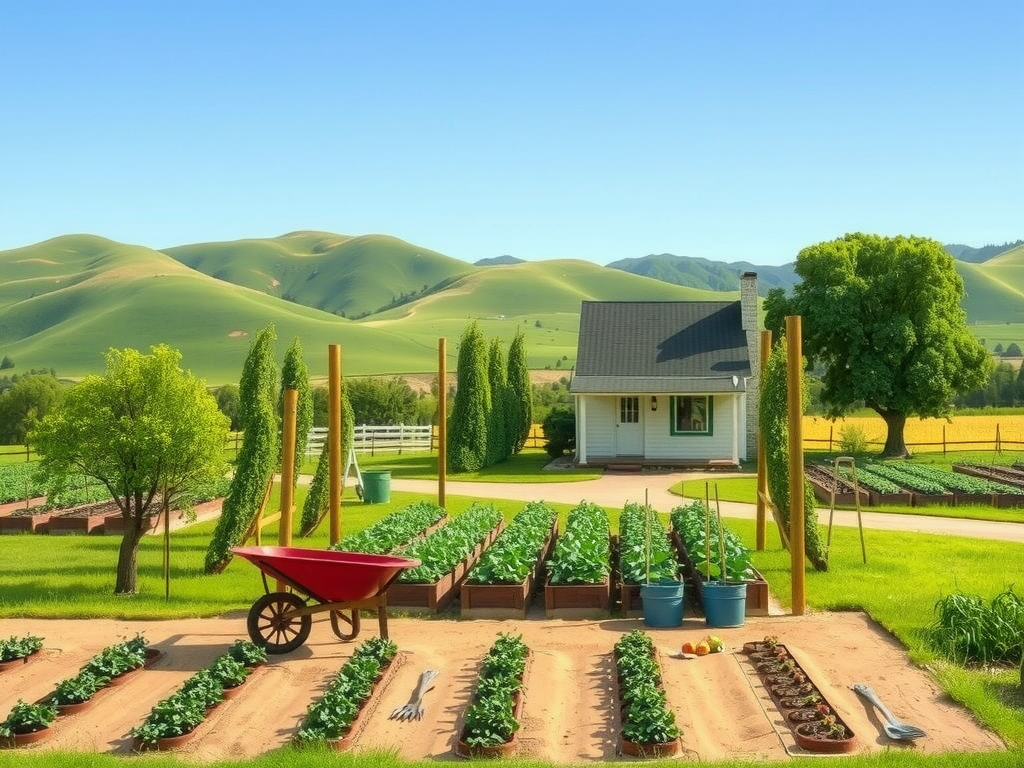
What Gardening Tools Do You Need
Jumping into gardening opens up a world of possibilities, and having the right tools is your first step to success. Essential gardening tools for beginners include shovels, rakes, and hand tools.
Shovels are perfect for digging deep into the soil and moving it around, while rakes are excellent for leveling the ground and collecting debris like leaves or mulch.
Hand tools such as trowels and pruning shears come in handy for those more delicate tasks where precision is key.
To keep your gardening tools in top-notch condition, simply clean and dry them after each use.
Don’t forget to sharpen the blades regularly for optimum efficiency. A little maintenance goes a long way.
Linking back to previous practices like crop rotation and proper irrigation can enhance your gardening strategy. If space is tight, consider investing in a multifunctional tool—it saves room while combining several functions into one, making your gardening experience even more enjoyable!
Essential Livestock Shelters For Beginners
Setting up the right shelters for your livestock goes hand-in-hand with ensuring their health and happiness.
Various livestock species, such as chickens, goats, and horses, each have unique needs when it comes to housing.
Chicken coops should be lightweight and easy to clean, as well as predator-proof to keep your flock safe.
For larger animals, barns offer ample space and ventilation, which is important for their well-being.
Importance of Ventilation
Maintaining good ventilation in livestock shelters is key to preventing respiratory issues. Proper airflow promotes health and comfort for your animals.
Consider designs that incorporate high vents to allow for airflow without letting in harsh elements.
Basic Shelter Design
When planning your livestock shelters, start with a basic design that includes:
- A level foundation for effective drainage
- Strong walls to protect against weather conditions
- High vents for optimal airflow
This initial planning ties back to effective livestock care and management strategies, ensuring your homestead thrives. By using the right shelters, you set the groundwork for a balanced approach to livestock care.
| Gardening Tools | Livestock Shelter Features |
|---|---|
| Shovels for digging and moving soil | Lightweight chicken coops for easy cleaning |
| Rakes for leveling ground and collecting debris | Spacious barns for larger animals |
| Hand tools like trowels and pruning shears | High vents for optimal airflow |
How To Plan For Sustainable Living
Creating a sustainable living plan is all about taking proactive steps towards a greener future. First, assess your current practices to understand your resource consumption.
This means taking a closer look at how you use electricity, water, and other resources within your home.
Next, integrate renewable resources like solar panels or wind turbines into your life to significantly reduce your carbon footprint.
Adopting these innovations leads to a more resilient lifestyle.
As you explore new practices, it’s important to implement conservation techniques. Consider rainwater harvesting or other energy-saving methods that fit your needs.
Prioritizing efficiency in energy use not only benefits the planet but also your wallet, making it a win-win situation. Set specific sustainability goals and track your progress using a simple template.
This way, you remain accountable and can adjust your strategies as needed.
Steps to Create Your Sustainability Plan
- Evaluate Your Resources: Look at what you have and identify areas for improvement.
- Research Renewable Energy Options: Explore solar or wind solutions that suit your location.
- Incorporate Conservation Practices: Implement water-saving systems and energy-efficient appliances.
- Track Your Progress: Use a template to note down goals and achievements regularly.
Understanding Soil Health For Your Homestead
You can’t have a thriving garden without healthy soil. It’s essential to check the pH levels of your soil to ensure nutrient availability for plants. Testing your soil regularly is a proactive approach that helps you make better decisions about what to grow. Organic matter plays a significant role in enhancing soil structure and fertility. It’s wise to incorporate composting into your routine as it enriches the soil and boosts productivity.
Utilizing crop rotation strategies, mentioned earlier, can improve soil quality and prevent nutrient depletion. Consider using cover crops, like clover or rye, during the off-seasons. These crops will enrich the soil and prepare it for future plantings. Keeping your soil healthy not only supports your crops but also encourages a biodiversity-rich ecosystem.
Key Components of Soil Health
pH Levels: Maintain the right balance for optimal nutrient uptake.
Organic Matter: Enhance soil fertility with natural amendments.
Soil Testing: Regular assessments lead to informed planting choices.
By focusing on these elements, you can build a thriving garden that contributes to your self-sufficiency. Think of enhancing soil health as a long-term investment in your homesteading success.
| Aspect | Importance |
|---|---|
| pH Levels | Optimal nutrient uptake for plants |
| Organic Matter | Enhances soil fertility and structure |
| Crop Rotation | Improves soil quality and prevents nutrient depletion |
| Rainwater Harvesting | Conserves water and reduces resource consumption |
Tips For Effective Crop Rotation Strategies
Crop rotation can be a game changer for anyone diving into sustainable gardening. By rotating crops, you enhance soil health, an essential aspect for thriving yields, while managing pest and disease issues effectively.
Let’s break it down!
Simple Rotation Plan for Beginners
A straightforward rotation plan can transform your garden.
Here’s a lineup to get you started:
- Year 1: Plant legumes, like beans, to fix nitrogen in the soil.
- Year 2: Follow up with leafy greens for nutrient uptake.
- Year 3: Introduce root vegetables for soil aeration.
- Year 4: Finish with fruiting crops to maximize productivity.
This approach not only disrupts pest cycles but also fosters nutrient cycling. Remember, crop diversity is key to sustainability!
Companion Planting for Enhanced Benefits
To boost your rotation’s effectiveness, consider companion planting. For example, pairing basil with tomatoes creates a beneficial relationship that encourages growth and deters pests. Using these companion strategies along with your crop rotation will ensure that your garden not only survives but thrives!
Ready to dig in? Let’s grow healthy together! With these practices, you’re on your way to achieving a flourishing garden that supports both self-sufficiency and sustainable living.
Crop Rotation
- Crop rotation can increase soil fertility by improving nitrogen levels through legumes.
- It helps in breaking pest and disease cycles, reducing the need for chemical pesticides.
- Diverse crop planting enhances soil structure and promotes beneficial microorganisms.
- Implementing a rotation plan can lead to higher overall yields and better resource management.

